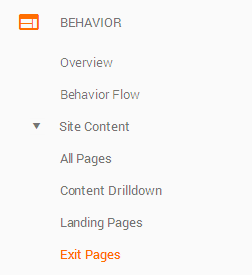Conversion rate optimization (CRO) is a digital marketing technique focused on helping businesses gain more potential customers. The main goal of this strategy is to enhance the end user’s digital experience and convert potential customers to actual customers. It works to improve website design and landing pages to increase lead generations.
There are various tools and analytics available for measuring conversion rate optimization. Implementing a CRO plan for your dealership starts with analyzing your website. Performing an A/B split test helps in seeing if there are any adjustments to be made in order to improve the overall website performance.
How It Works and How It Is Calculated
A conversion takes place when a visitor on your website completes a major goal of your website. For example, purchasing a product or registering on your website. For a healthcare business, a conversion occurs when a visitor completes a sign-up or fills up a form. This conversion can be tracked by analytical tools and also tracked in your A/B testing.
In simple terms, the higher the proportion of your website visitors that are converting for any of your website goals, the higher will be the conversion rate for your website. Your overall website conversion rate is the number of website conversions/ number of website visitors multiplied by 100. For example, in the case of an e-commerce website the conversion rate is calculated using the formula, the number of orders/ number of website visitors multiplied by 100.
Other Ways to Measure Website Success
There are many micro level success measures which are known as success metrics available to measure the success of a website:
- Shopping cart abandonment rate: This refers to the number of visitors who start but do not complete the shopping cart flow.
- Page view per visit: This is the amount of page that a visitor sees per visit and is great for media websites in particular.
- Homepage bounce rate: This refers to the number of visitors who arrive on your homepage and immediately leave the website without seeing the page.
- Sign-up form completion rate: The number of visitors who visit your sign-up form page and complete it.
Identifying the Pages that Need Attention
When measuring CRO, it is important to know which web pages to test in the first place. To locate these pages, you should identify what the top priorities of your website are. Google Analytics allows you to find these pages. Find out which pages have the highest exit rate or the percentage of visitors leaving your site from a certain page. This should not be confused with the bounce rate. Therefore, people staying on your website after leaving a page will not be part of the exit rate.
The exit rate can be found in Google Analytics, below Content:

Finding the exit pages alone is not enough. You should also find out if that page is actually making you revenue. If you have another page with a slightly lower exit rate that is bringing you much more revenue, then that page is much more important to optimize. That means you have to consider Page Value or the average amount of money people spend after having visited a page. If you find that a larger number of visitors to a particular page on your website convert, the page value of that page will increase. You can order your pages by Page Value if you choose “All Pages” instead of “Exit Pages” in Google Analytics.
To get relevant data, set an advanced filter:
Ensure that the numbers after “Greater than” applies to your website. With this, you will be able to identify your most important and valuable pages. Those pages with a high exit rate and a high page value are the pages that need to be optimized.
Implementing an effective CRO strategy for your website is one of the most effective steps necessary for digital marketing. So regain your competitive edge and add CRO to your website marketing strategy.





